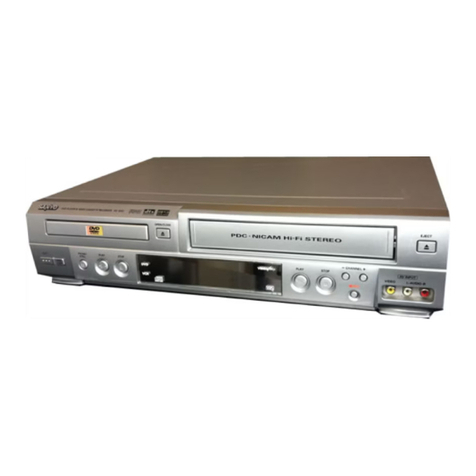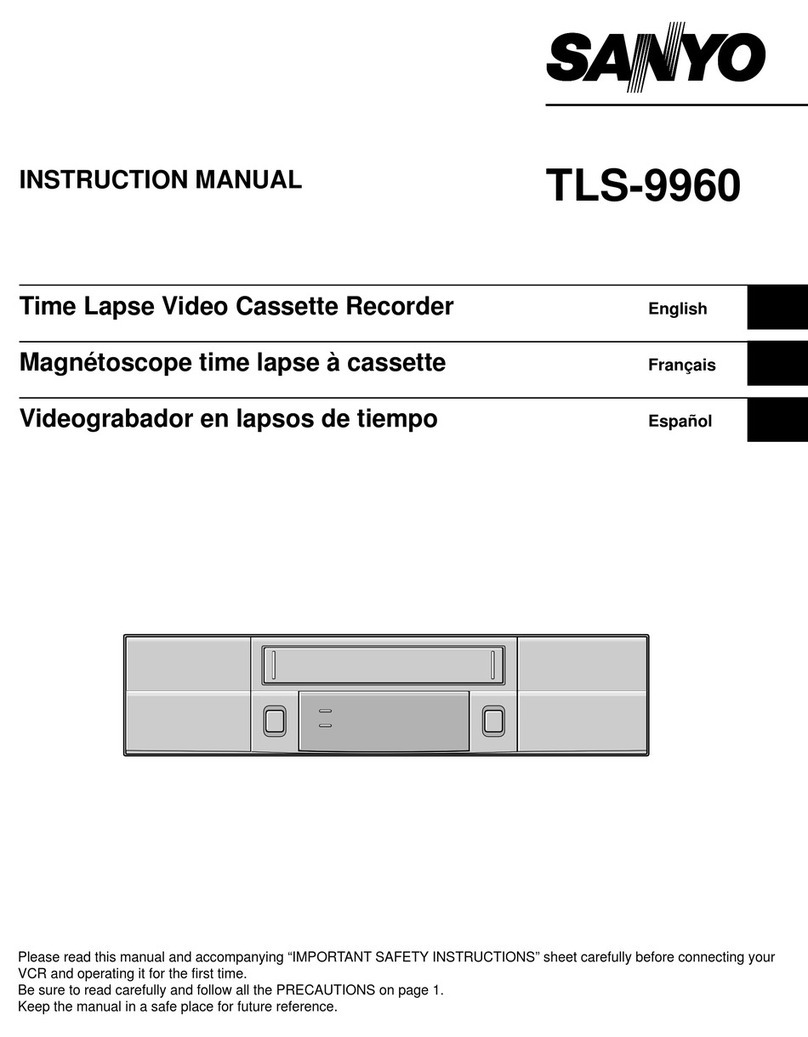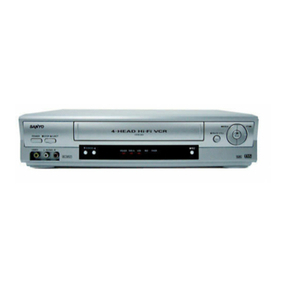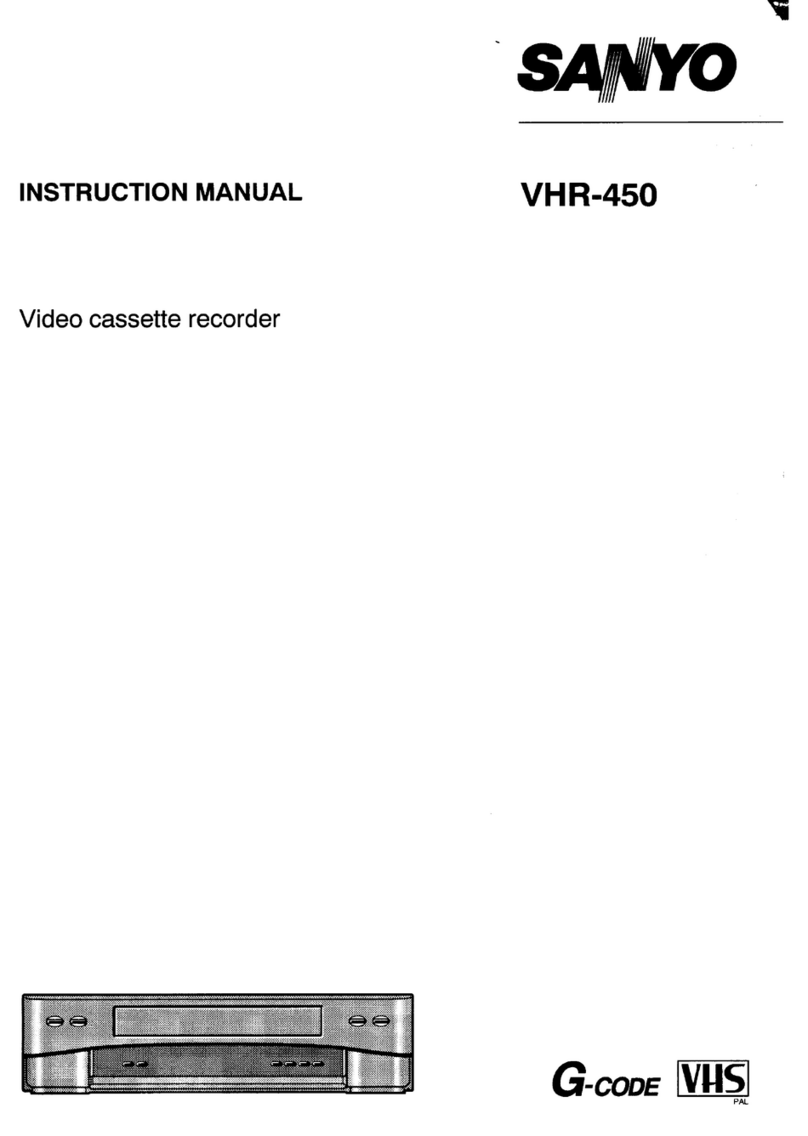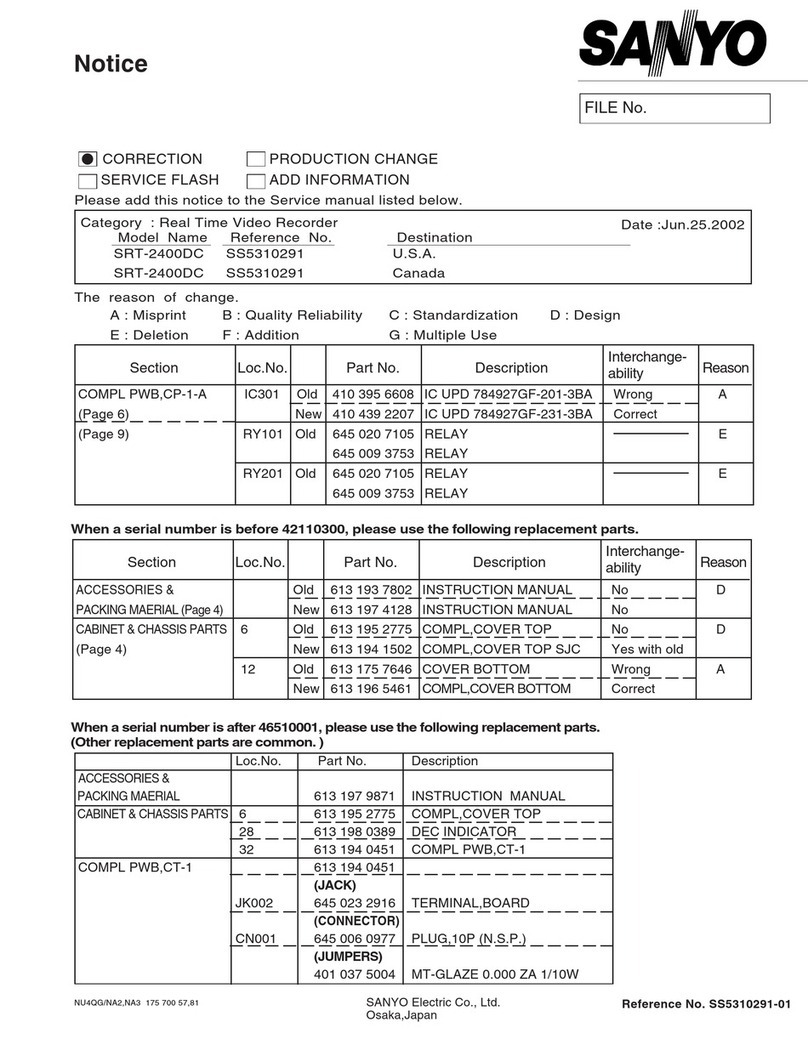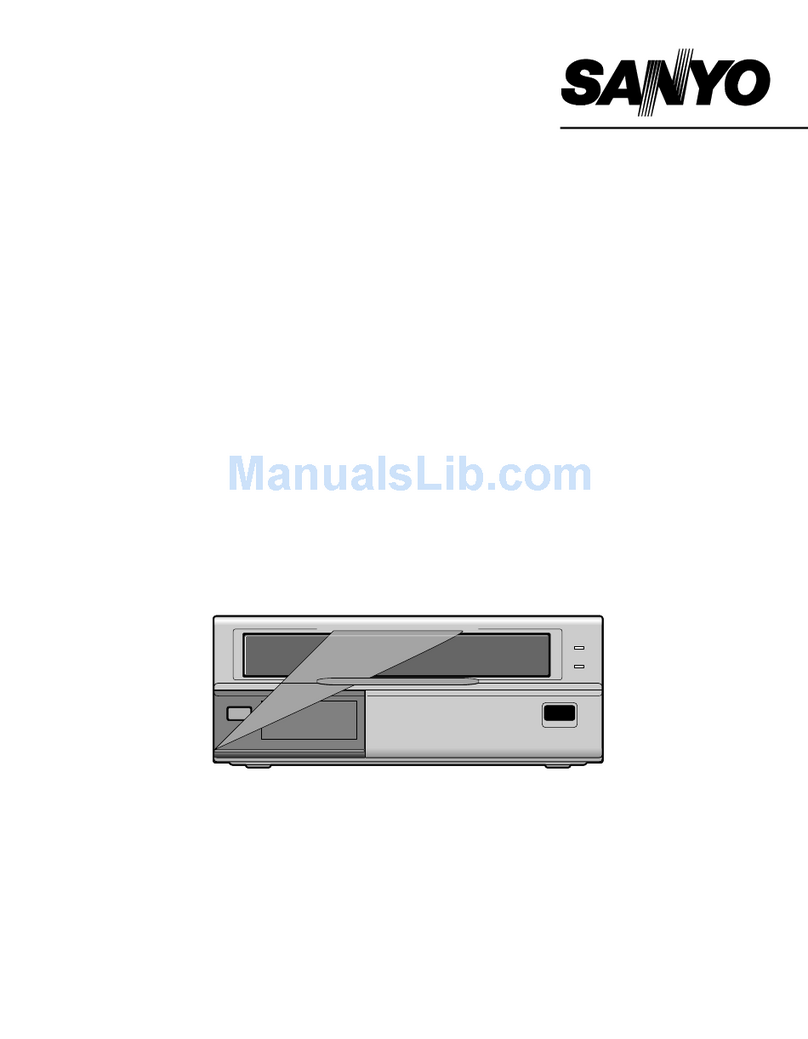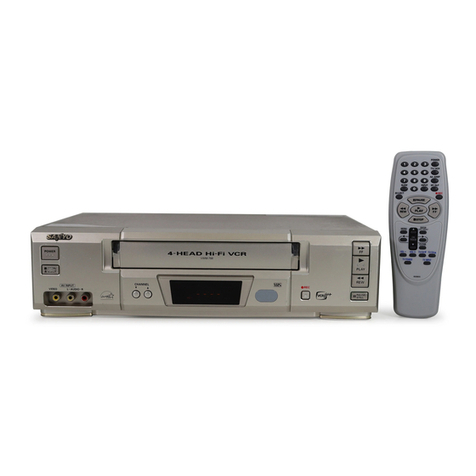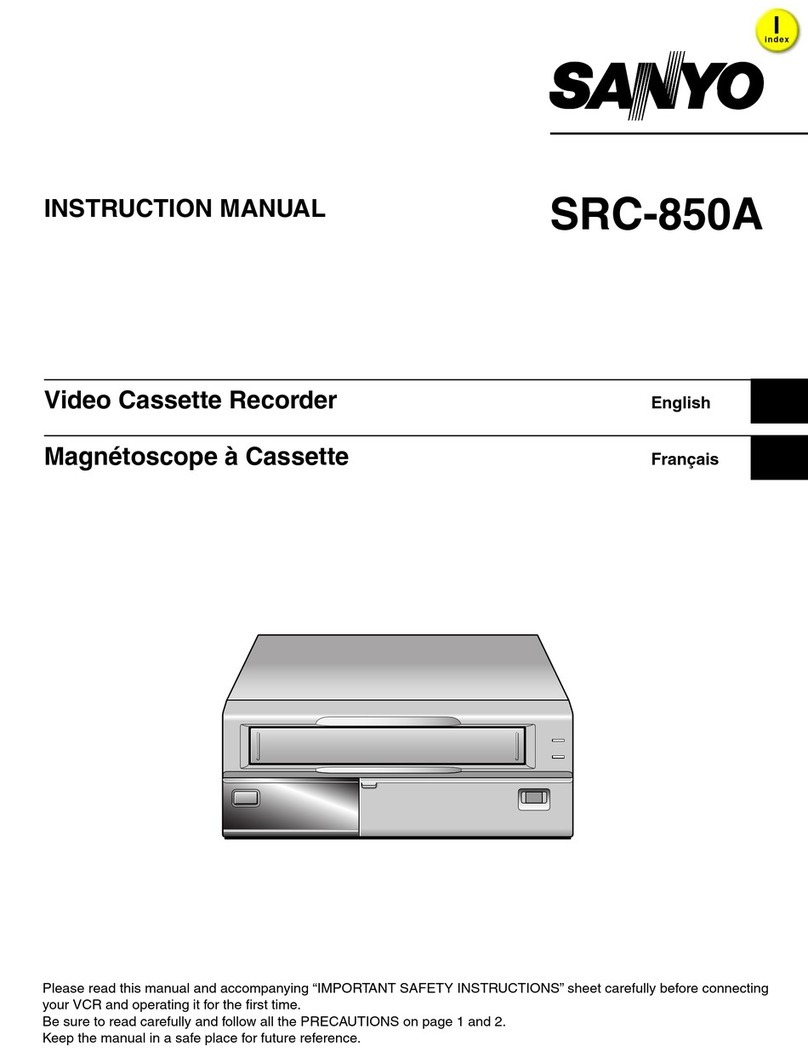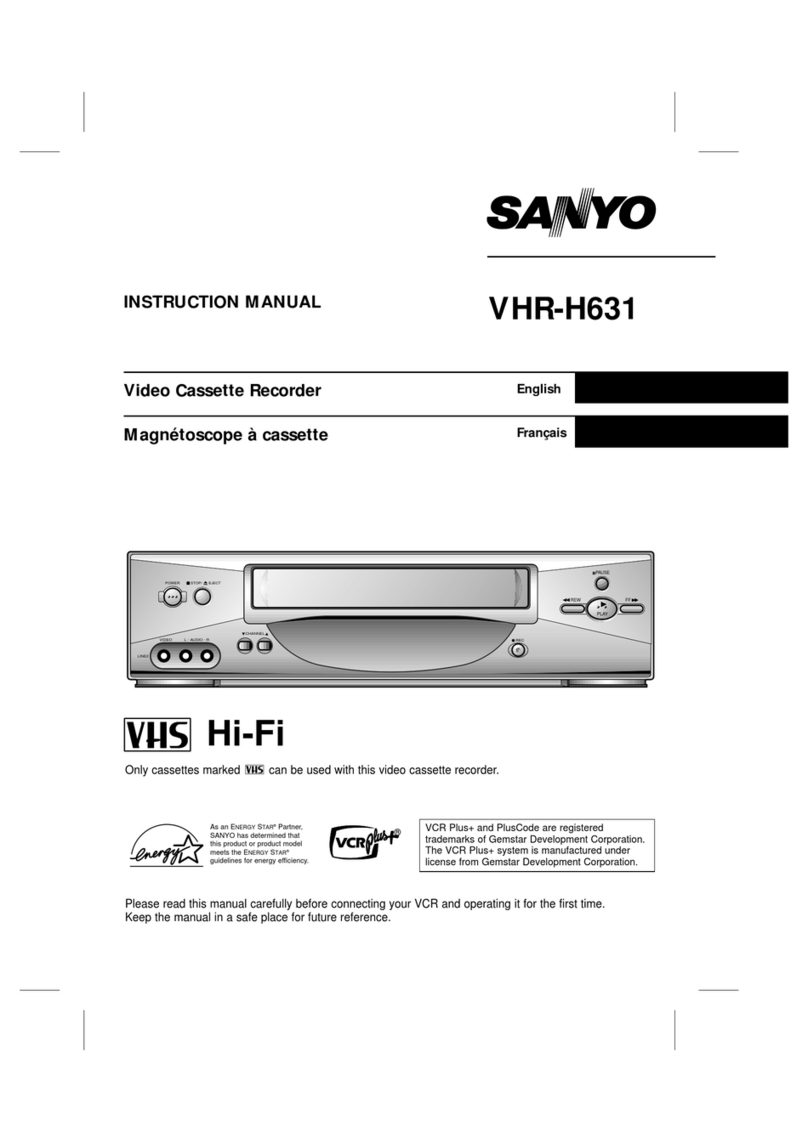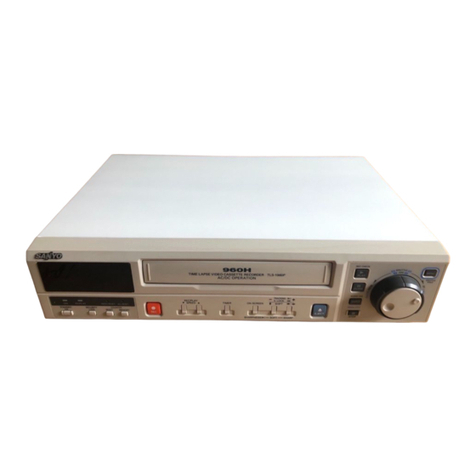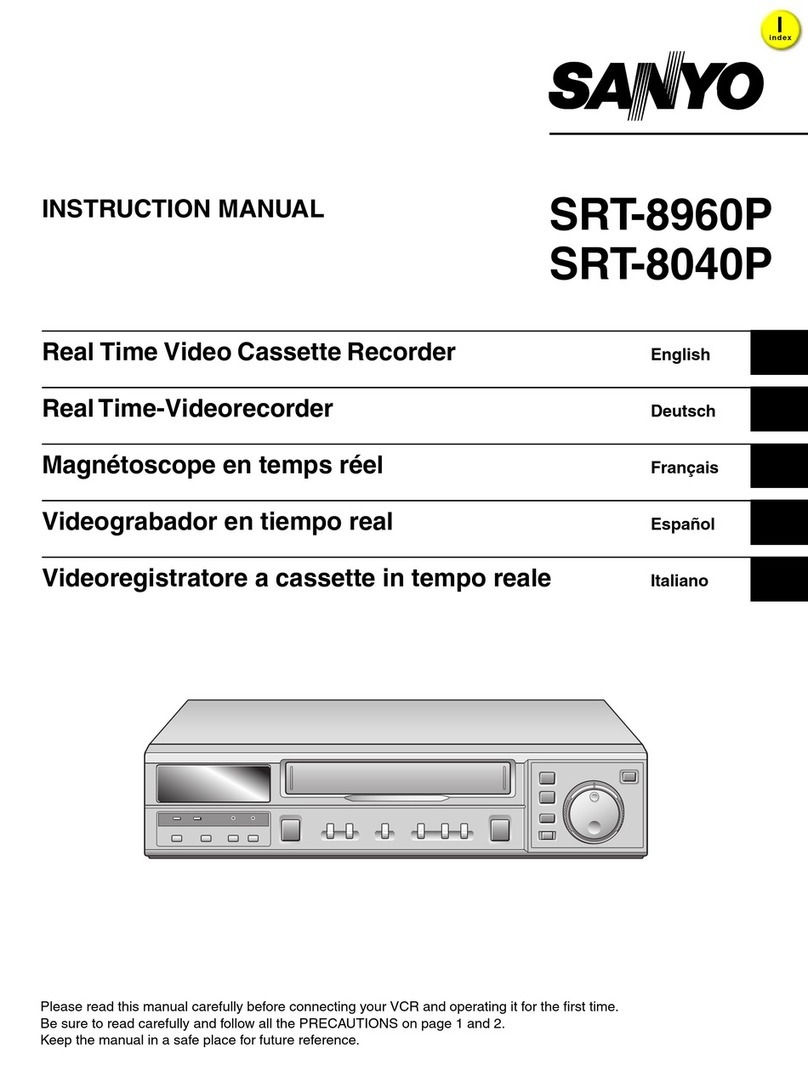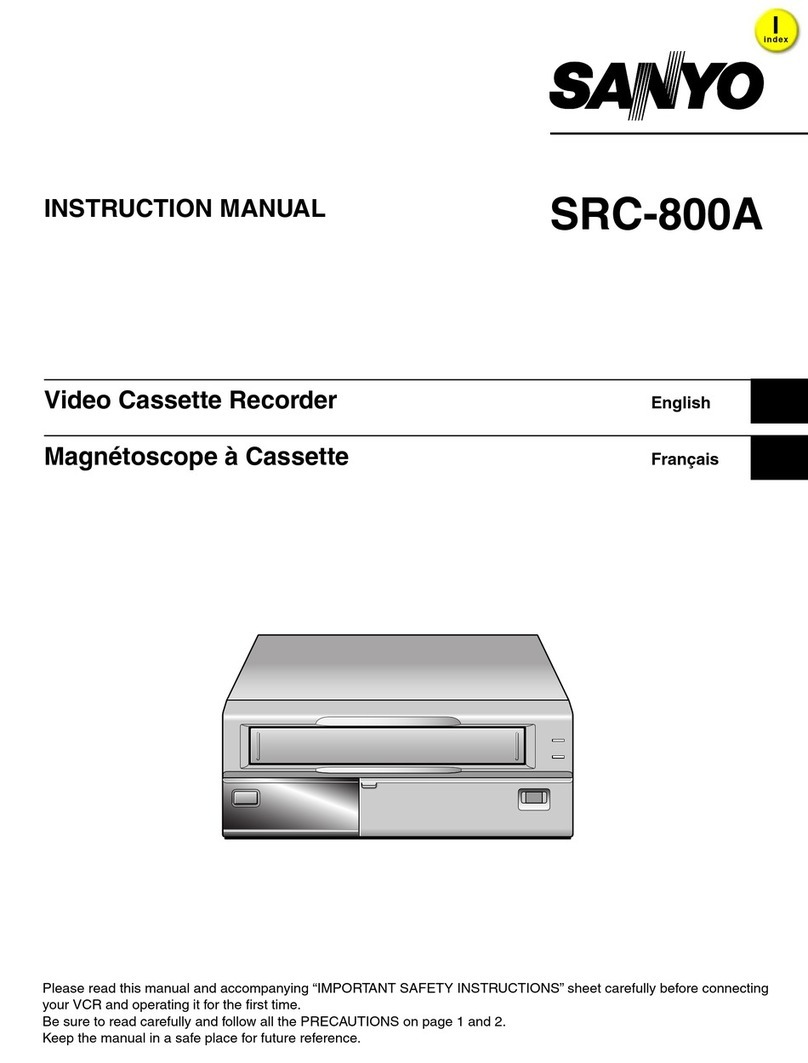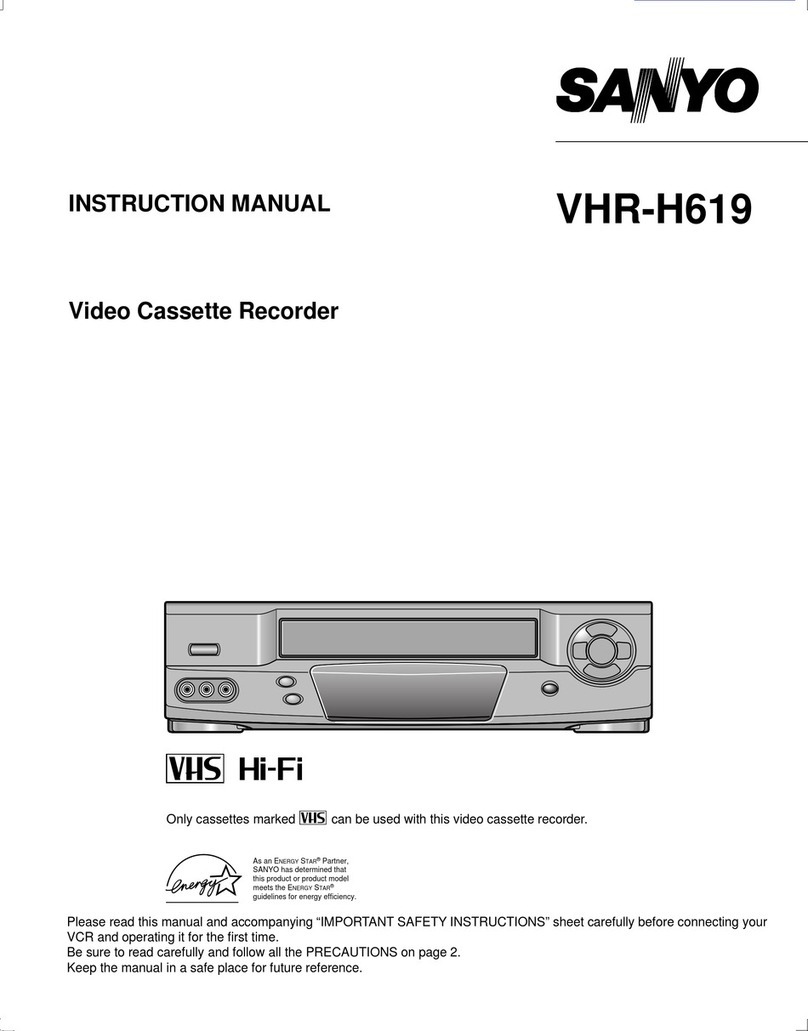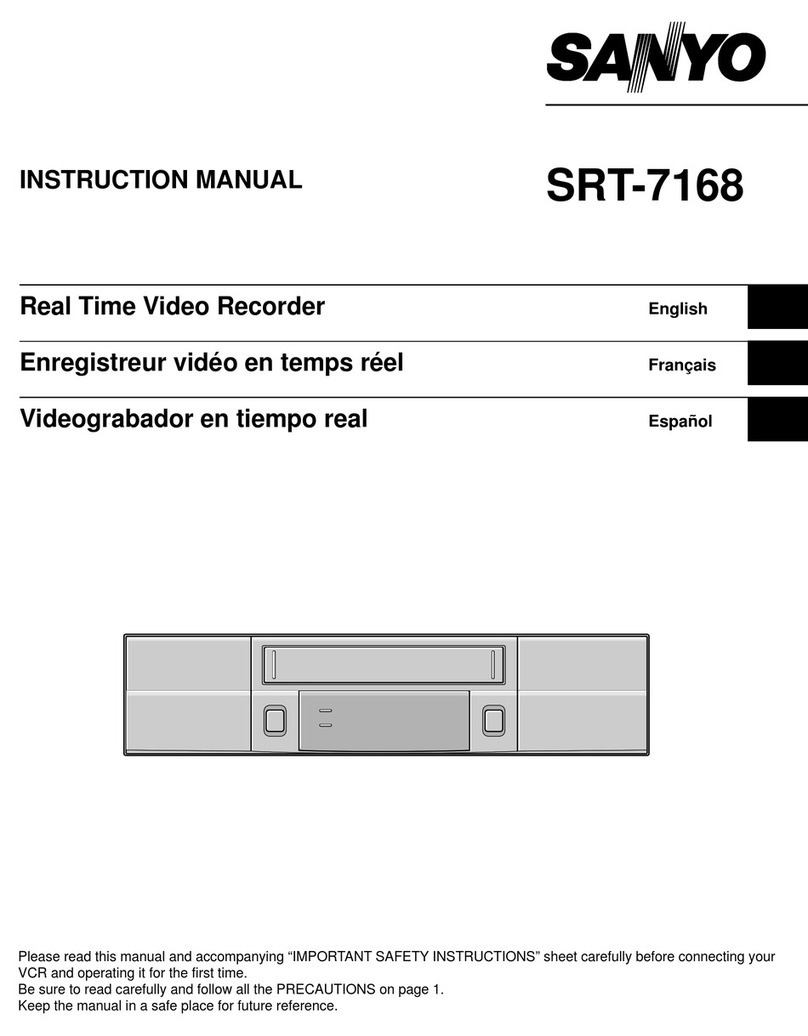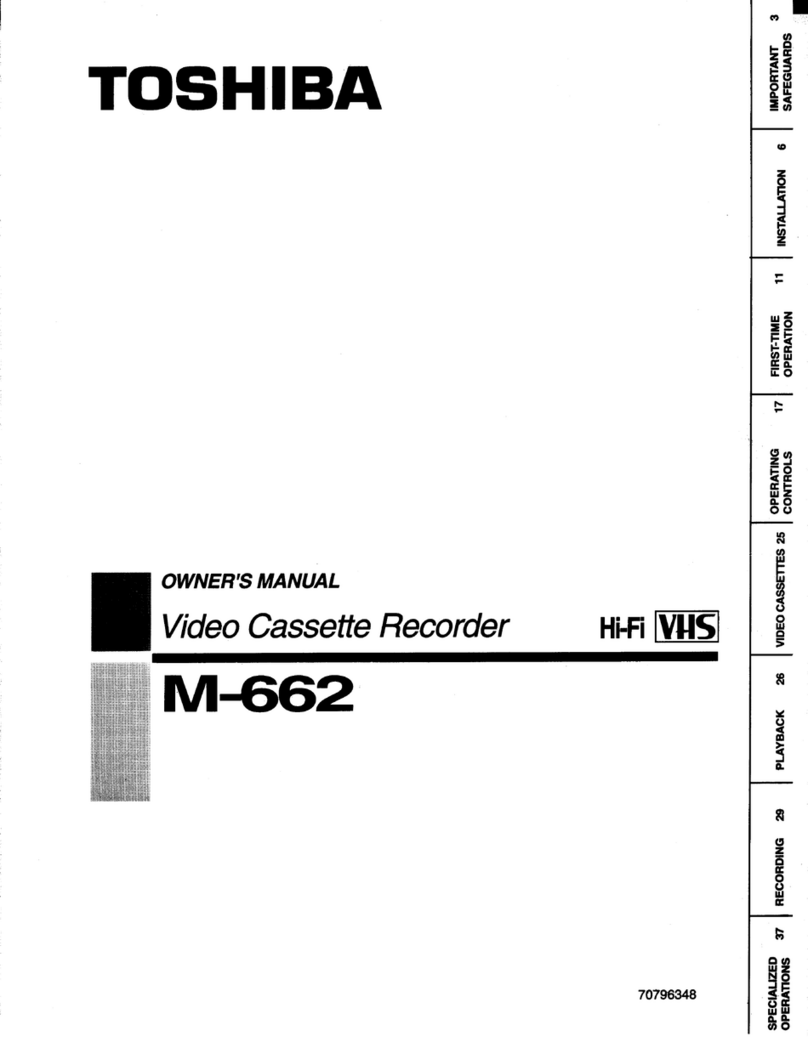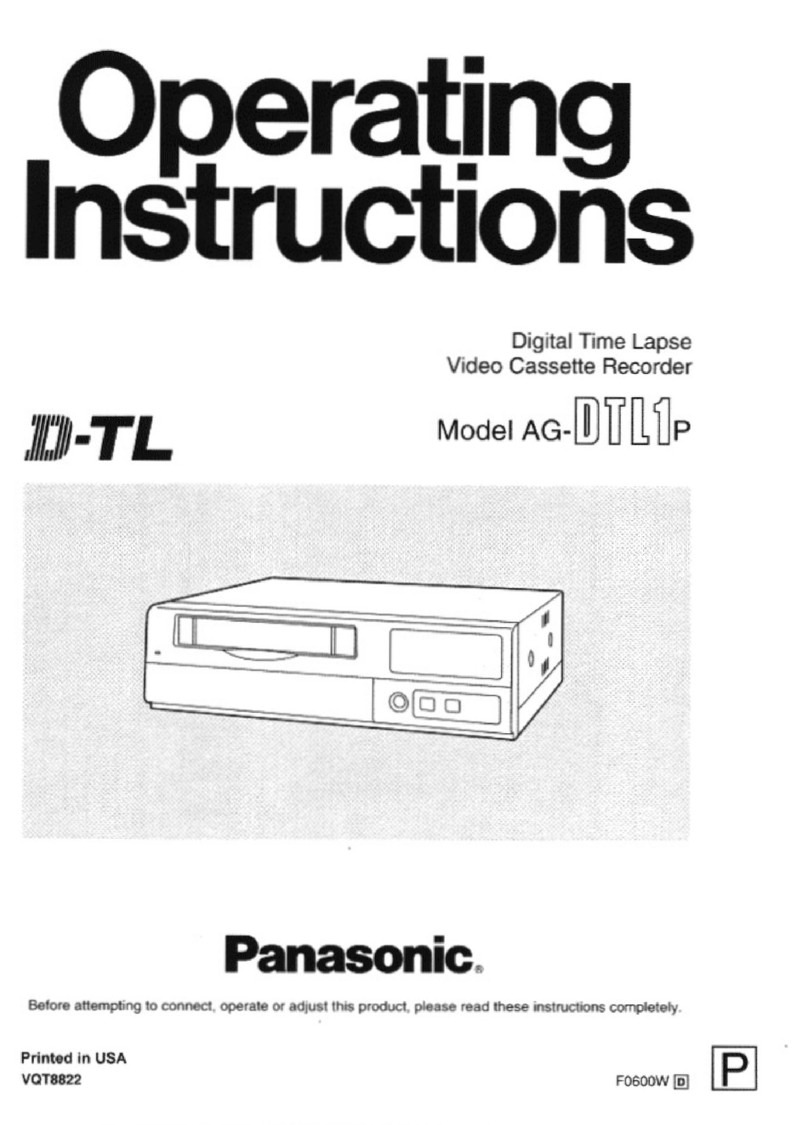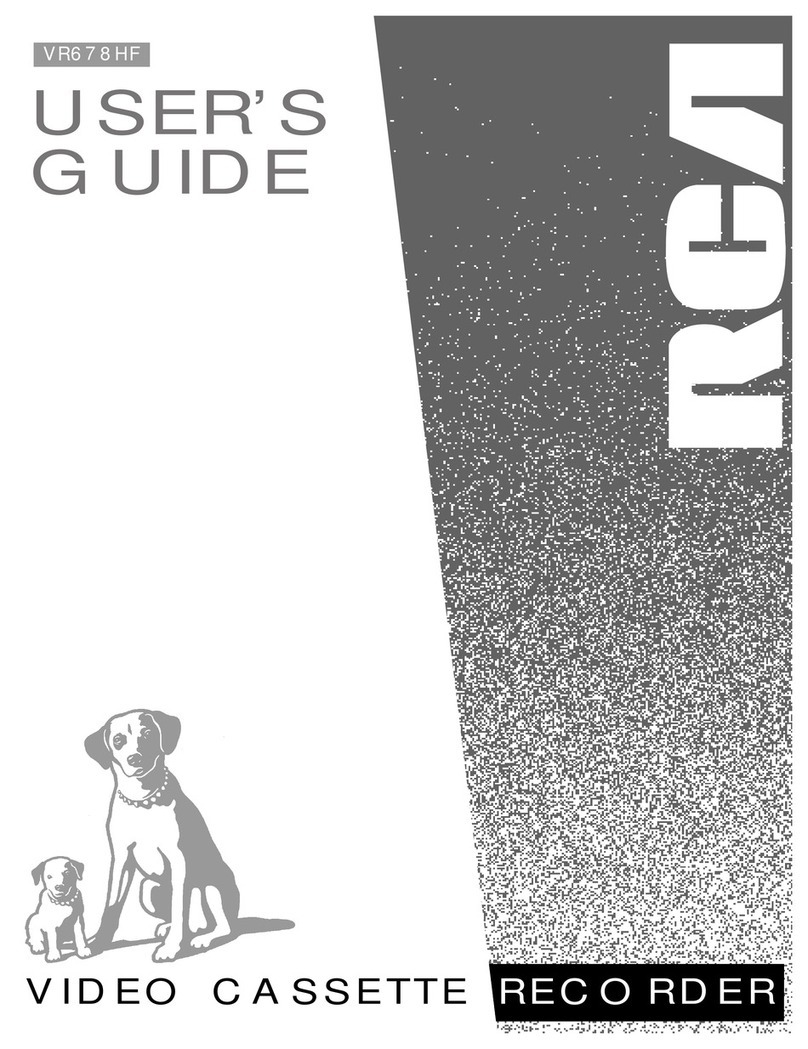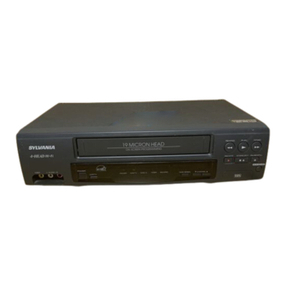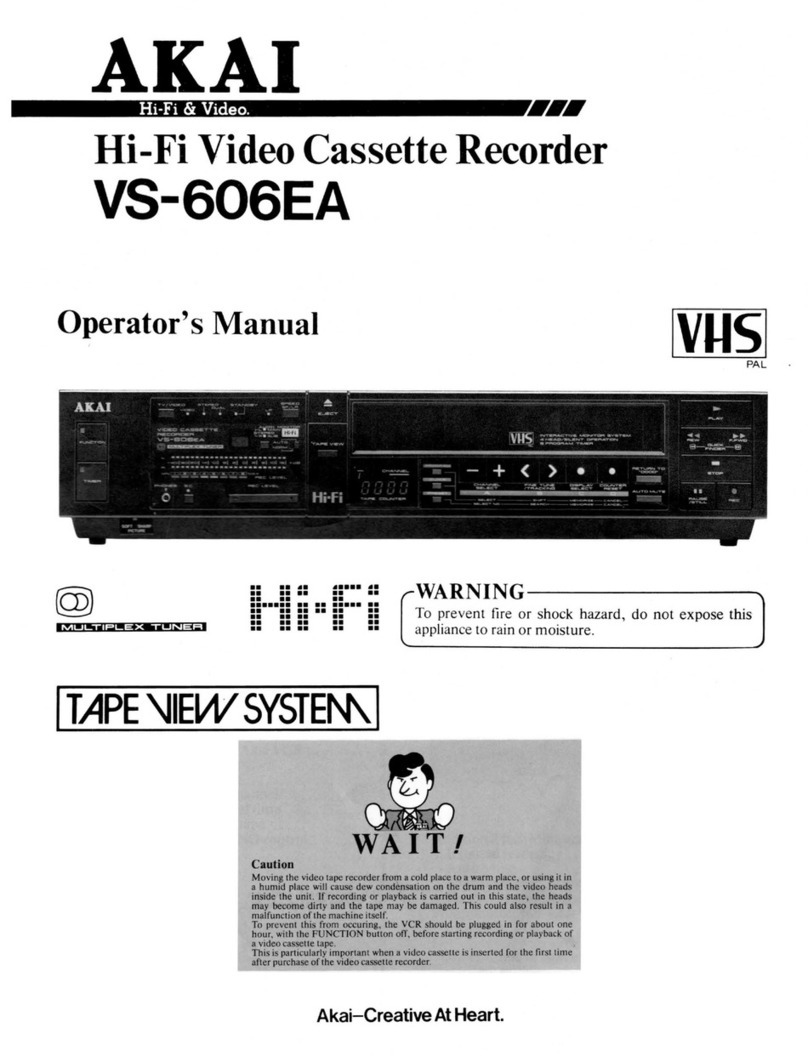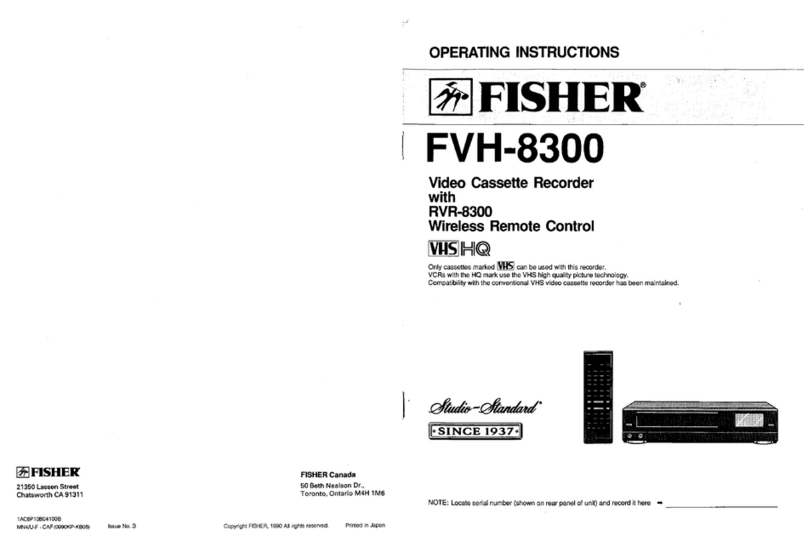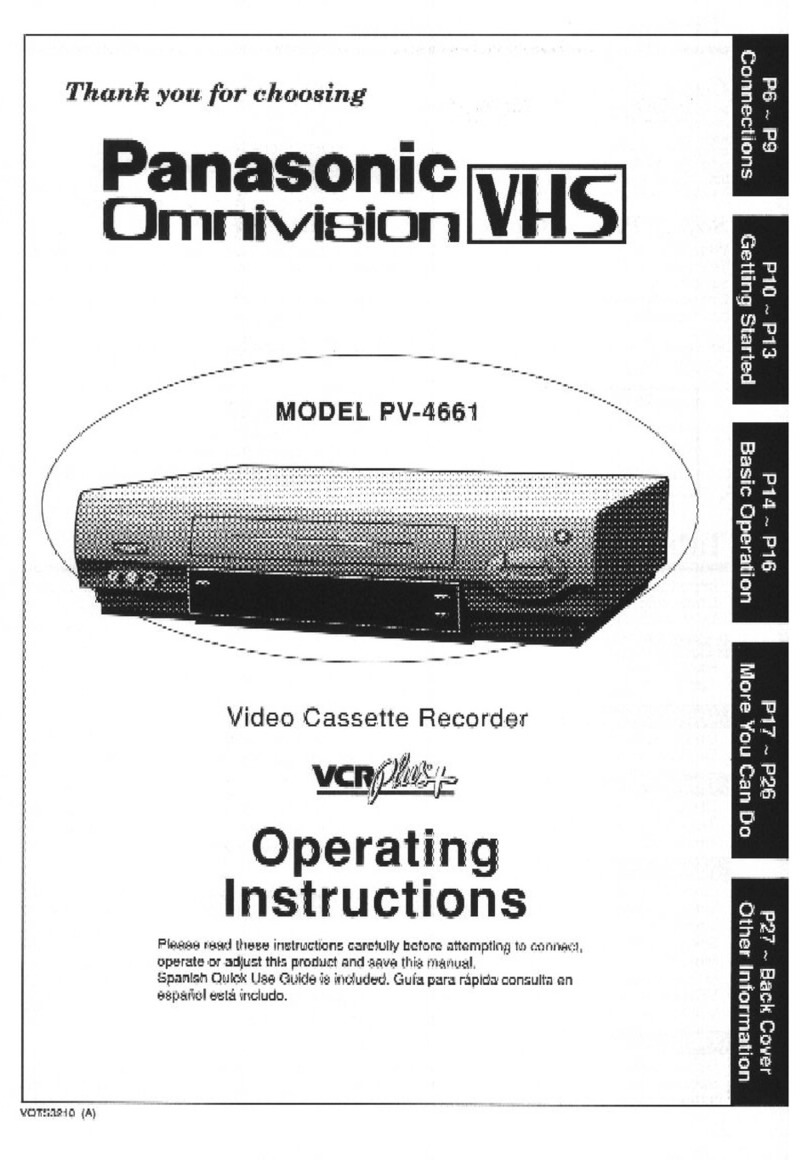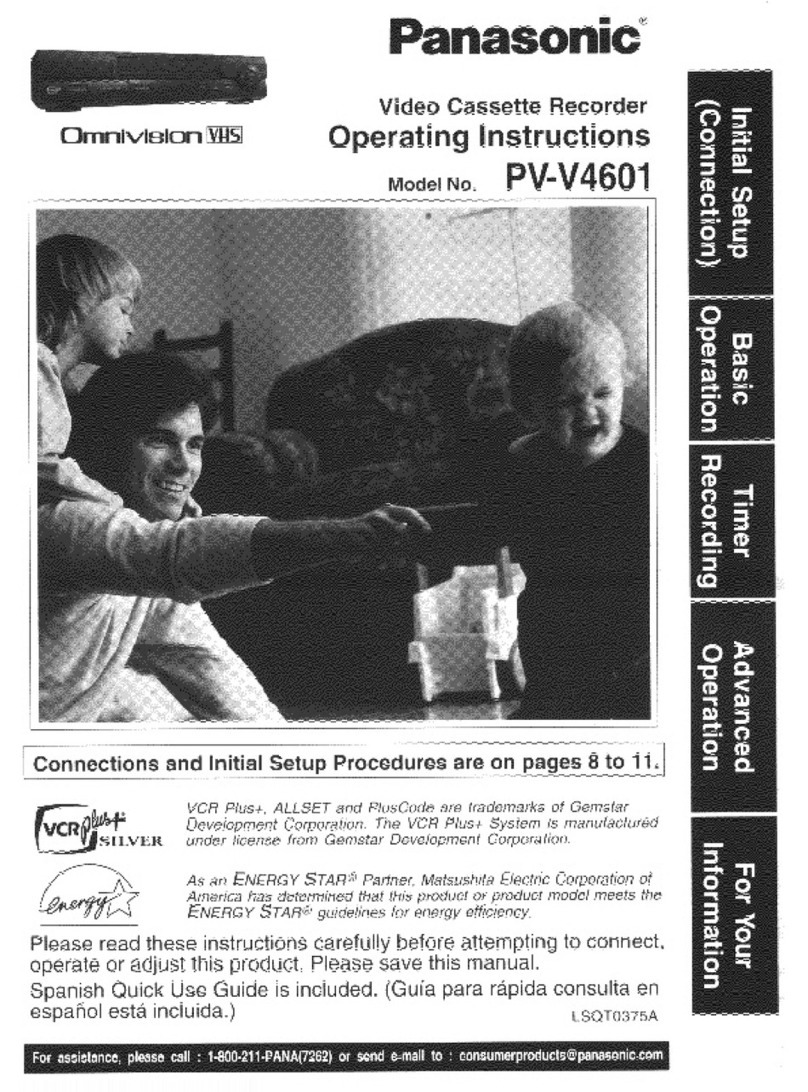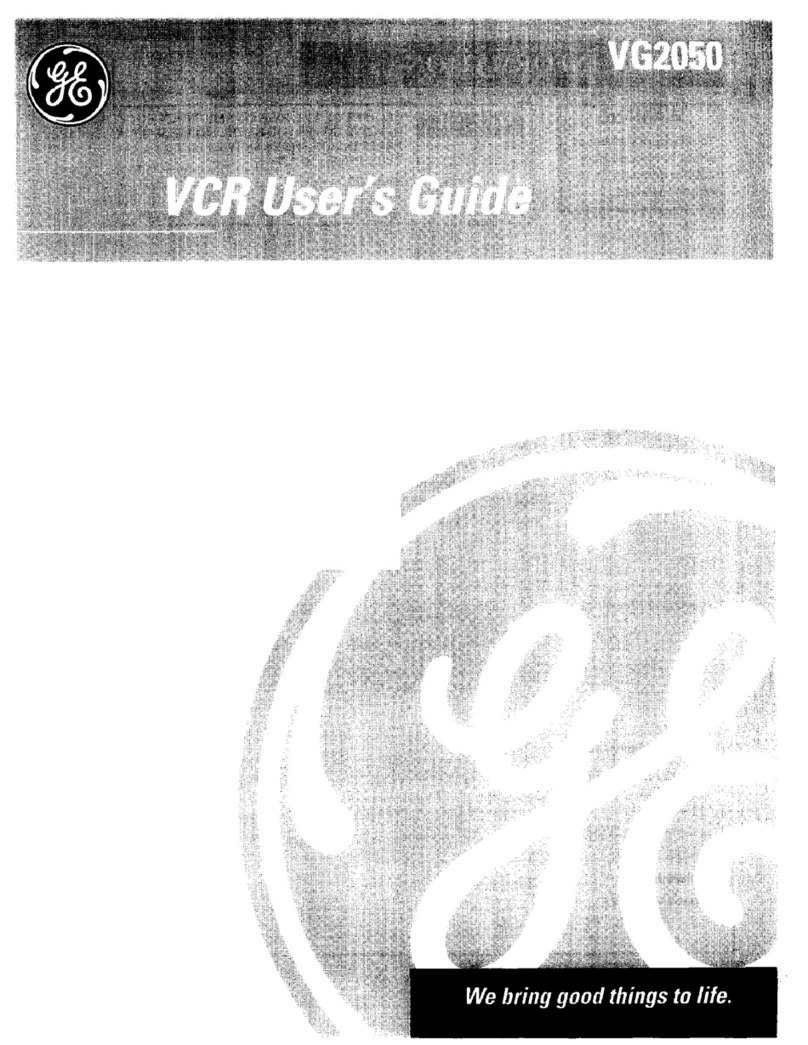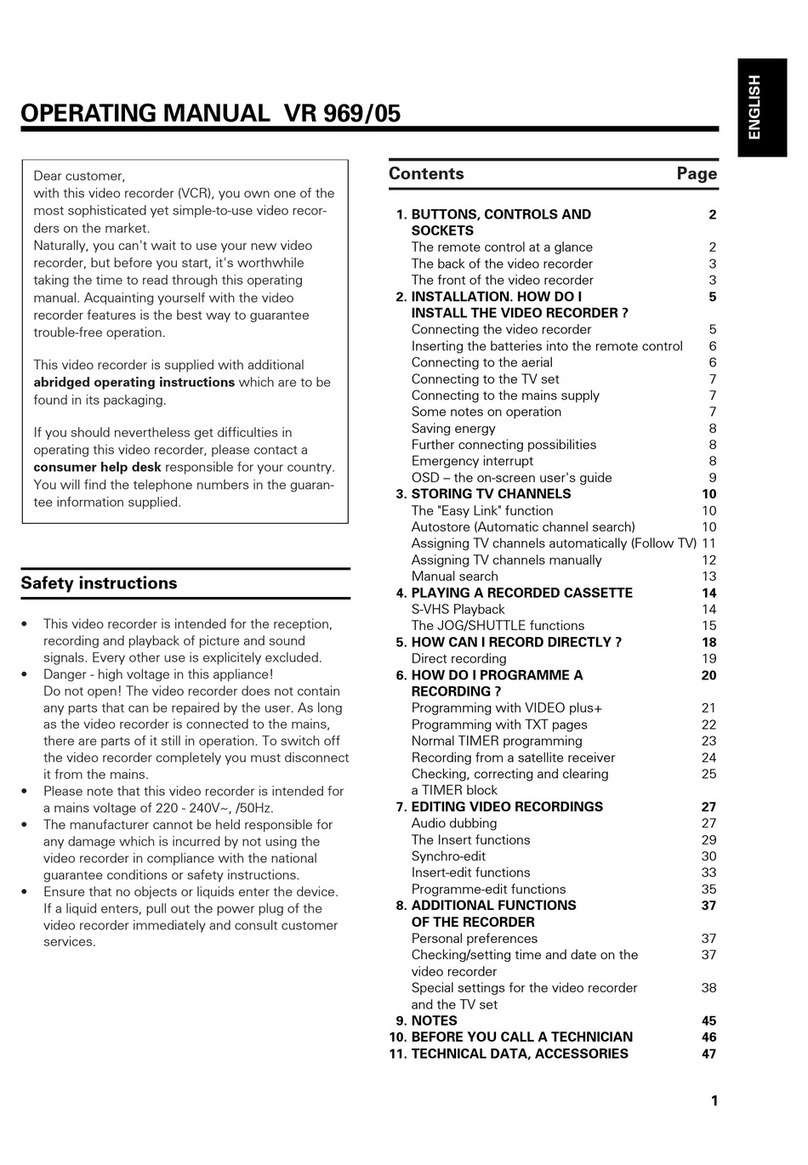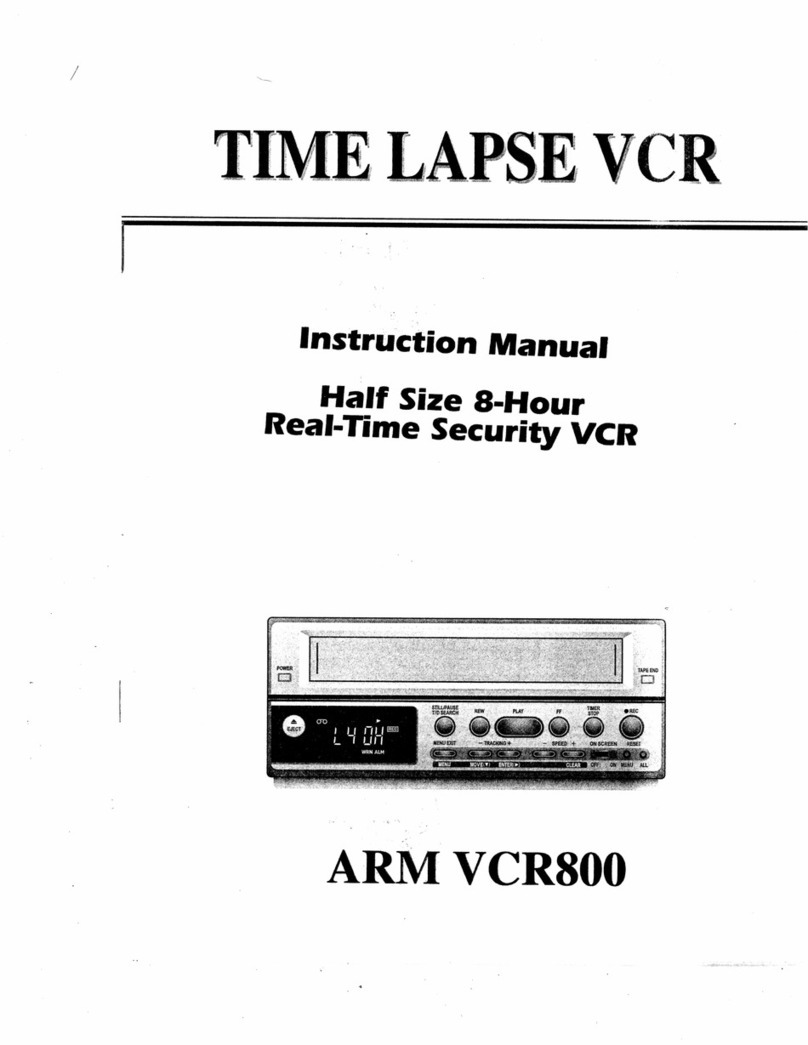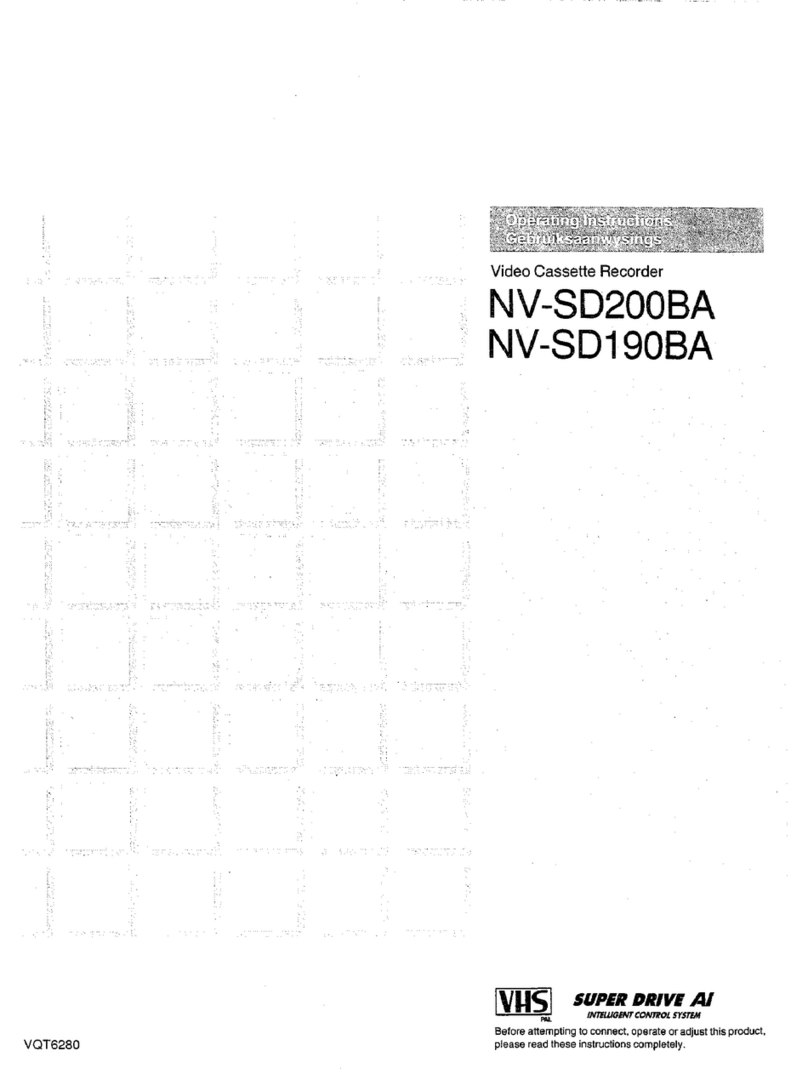
3. DISASSEMBLING THE MAIN PARTS
OF THE MECHANISM
POINTS TO NOTE
●
●
●
When fitting the parts of the mechanism, refer to the
“Assembly Notes”, and proceed in the reverse of dis-
assembly order.
Dis-assembly and assembly should be carried out in
EJECT mode unless amovement mode is explicitly
specified. EJECT mode is the state in which the cassette
tape has been ejected.
Clamps are used to prevent parts coming loose. When
removing aclamp, be careful not to force it, as this can
result in damage.
3-1. HOW TO MAKE THE MECHANISM
MOVE
In order to check amovement such as front loading, front
unloading, tape loading, tape unloading, raising/lowering
and pressing the pinch roller, you will need to operate the
loading motor. There are two methods of operating the
loading motor, and these are explained in sections 3-1-1
and 3-1-2. The above movements can also be performed
without operating the loading motor, by following the
method explained in section 3-1-3.
3-1-1. HOW TO OPERATE THE LOADING MOTOR
USING A DC VOLTAGE SUPPLY
(See Fig.3-l-1)
1) Remove the power plug from the socket.
2) Remove ~he top cover, front cabinet assembly and
bottom cover.
3) Supply aDC voltage in the range 5V between the
MOTOR (+) wire and the MOTOR (-) wire on the CP-I
PWB assembly. To make the loading motor rotate in
the PLAY or FF/REW direction, the positive terminal
should be connected to the MOTOR (+) wire, and the
negative terminal to the MOTOR (–) wire. To make it
rotate in the EJECT direction, connect the positive
terminal to the MOTOR (-) wire, and the negative
terminal to the MOTOR (+) wire.
When rotating the loading motor inthe EJECT direction
with atape slacken, stop the rotation of the loading
motor before beginning front unloading.
Rotate the capstan motor with your hand, wind the
slacked part of the tape, and rotate the loading motor
in the EJECT direction again.
NOTE 1: When carrying out front loading, release the lock
by pressing down the tray lock lever@ and the lid opener
lever @of the cassette mechanism assembly (shown in
Fig.3-2-2) in the direction of the arrow.
NOTE 2: When the loading motor stops rotating, following
the completion of an operation such as tape loading or
front unloading, switch off the DC voltage supply.
Bottom side
Motor (+) wire
Motor (-) wire Front side
Fig.3-l-l
3-1-2. OPERATING THE LOADING MOTOR BY THE
MANUAL METHOD (See Fig.3-l-2)
1) Refer to section 3-2 and install the mechanism unit.
2) Using your finger, turn the loading motor located at
the rear of the mechanism unit. For EJECT, turn the
loading motor in the direction of the arrow on the
loading motor. For PLAY or FF/REW, turn it in the
opposite direction.
When rotating the loading motor in the EJECT direction
with atape slacken, stop the rotation of the loading
motor before beginning front unloading.
Rotate the capstan motor with your hand, wind the
slacked part of the tape, and rotate the loading motor _
in the EJECT direction again.
When carrying out front loading, release the lock
by pressing down the tray lock lever @and the lid
opener lever @of the cassette mechanism assembly
(shown in Fig.3-2-2).
The arrow which showtha direction of EJECT
atFig.3-l-2
d
Loading motor
3-1-3. MAKING THE MECHANISM MOVE USING
THE MANUAL METHOD
1) Refer to section 3-2 and remove the mechanism unit.
2) Refer to section 3-15 and remove the gear wheel 2.
3) If you turn the main cam anticlockwise, the mechanism
will switch to amode such as PLAY or FF/REW. To
switch from FF/REW mode to EJECT mode, turn the
main cam clockwise. L
–8–

